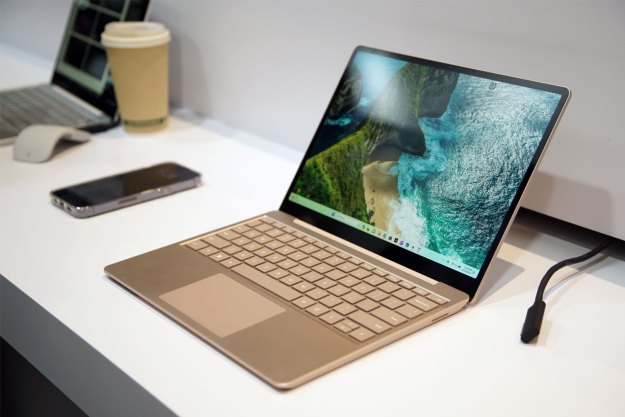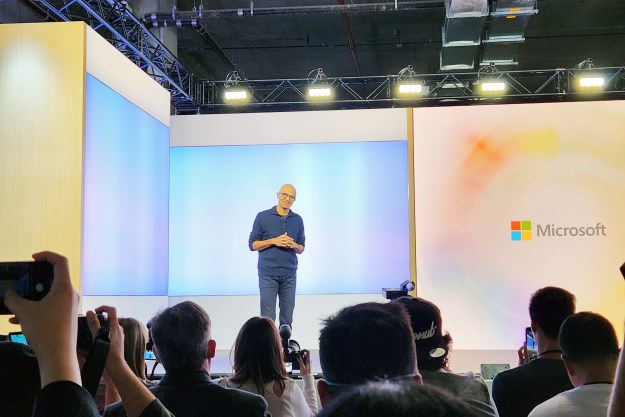
Microsoft watcher Paul Thurrott claims that the company originally intended to use Qualcomm’s ARM-based Snapdragon processor in its new Surface Go. But Intel supposedly caught wind of the move and offered “deep discounts” on its Pentium Gold processor that Microsoft simply could not refuse.
Microsoft introduced the Surface Go in July targeting Apple’s iPad. It has a starting price of $400 packing Intel’s seventh-generation Pentium Gold 4415Y two-core processor released in the first half of 2017. The chip has a base speed of 1.6GHz and only draws six watts of power on average. Had Microsoft gone with a Snapdragon 835, the Surface Go would have an eight-core chip with speeds of up to 2.45GHz. Snapdragon chips typically eat up to five watts of power.
As revealed in our tests, the Pentium-based Surface Go lasted just over eight hours in continuous video playback and around five hours in our web browsing loop. The Surface Go relies on a 27WHr battery, so it really can’t be compared against the larger “always connected” Snapdragon-based Windows 10 PCs with larger batteries.
Qualcomm’s Snapdragon chips promise high performance, crazy-long battery life and a constant internet connection. The company teamed up with Microsoft to provide “always connected” PCs in late 2017. The three models currently available include the Asus NovaGo, the HP Envy x2, and the Lenovo Miix 630. The first two claim a battery life of up to 22 hours while the Lenovo model maxes out at 20 hours.
Using Qualcomm’s Snapdragon chip in the Surface Go makes sense given its high portability. But that means the device would need to run Windows on ARM, a modified version of Windows 10 fine-tuned to run on ARM-based processors. ARM licenses out a different CPU design than what’s used with processors by Intel and AMD, requiring a different “language.”
That was Microsoft’s whole problem with the original Surface. Based on the now-defunct Windows RT, the first Surface had a limited app library. Customers were already annoyed with the tile-based Windows 8 interface, but they also couldn’t run their favorite desktop software designed for Intel- and AMD-based PCs. Microsoft is now better prepared with Windows 10 and the Universal Windows Platform.
If you’re not familiar with the Surface Go, it’s a 10-inch Surface-branded tablet with an 1,800 x 1,200 resolution. It runs Windows 10 in S Mode out of the box, meaning there are restrictions in place such as locking software installs to the Microsoft Store. The device includes 4GB or 8GB of system memory and 64GB or 128GB of storage, depending on your budget.
Although the Surface Go doesn’t provide LTE connectivity, you’ll find Bluetooth 4.1 and Wireless AC wire-free networking. The port complement includes one USB-C, a headphone jack, a MicroSD card reader, a Surface Type Cover port, and a Surface Connect port. Given the device relies on a 27WHr battery, taking the Snapdragon road may have extended the video playback time beyond the current nine-hour threshold.
Editors' Recommendations
- Here’s proof that Snapdragon X Elite laptops can play hit games without issue
- I’m worried about the future of the Microsoft Surface
- This sleeper Asus laptop is faster and cheaper than Microsoft’s Surface Laptop Go 3
- Surface Laptop Go 3 vs. Surface Pro 7+: is it an upgrade?
- Everything Microsoft didn’t announce at its 2023 Surface event

